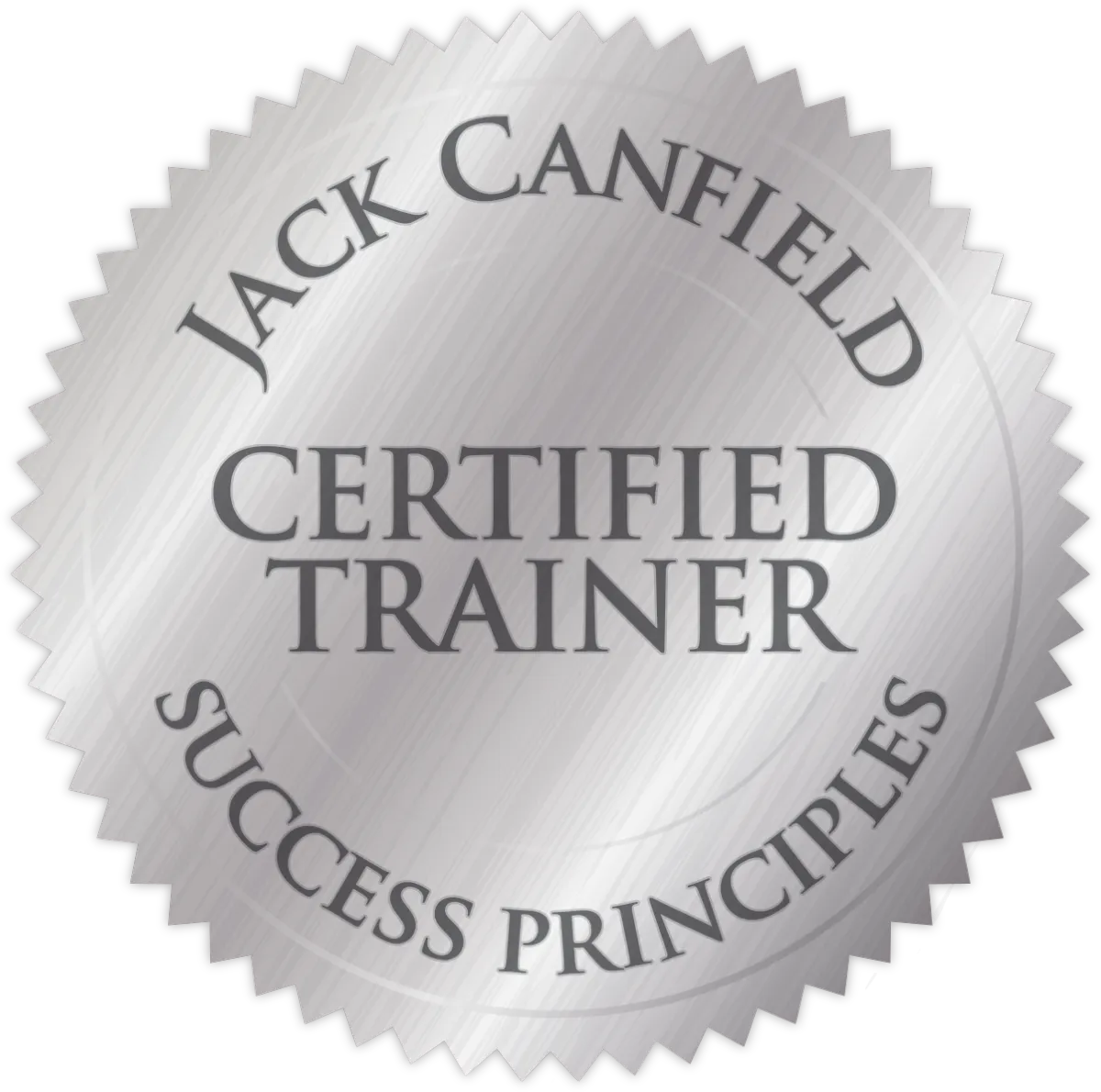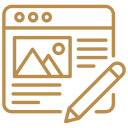Watch The Journey
BLOG
Optimizing Sales Funnels for Higher Conversion Rates
Saturday, July 6, 2024
Jeremy Coates
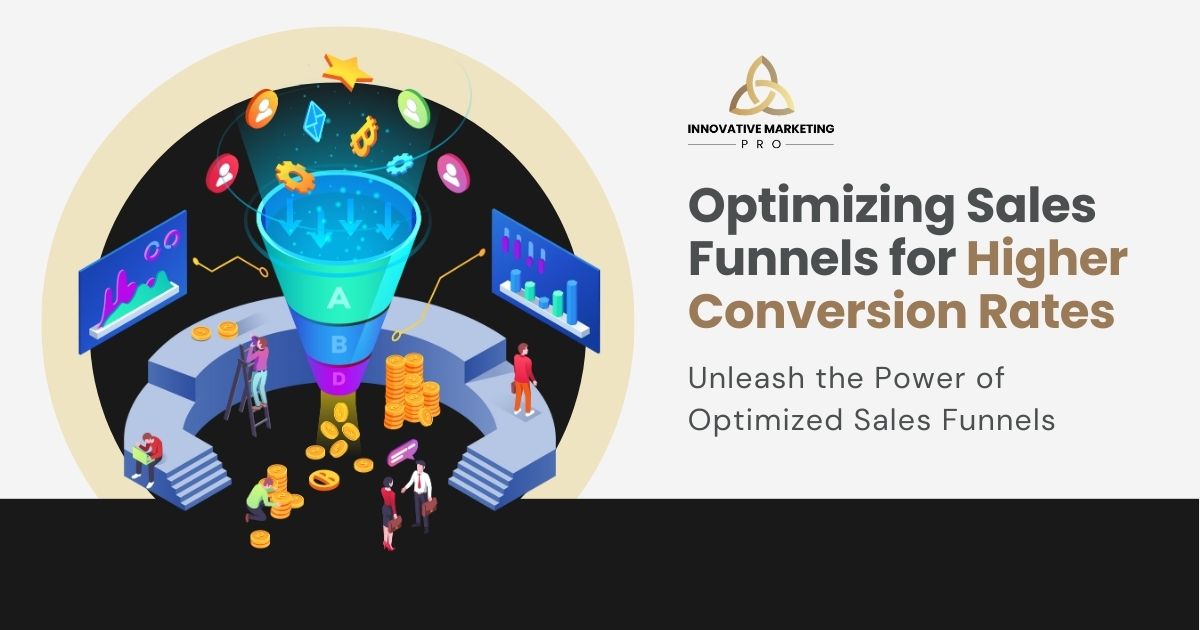
Unleash the Power of Optimized Sales Funnels
The Crucial Role of Sales Funnels in Modern Marketing
In today's digital age, where competition is fierce and consumer attention spans are short, the ability to guide potential customers smoothly from awareness to action is more critical than ever. Sales funnels serve as the backbone of modern marketing strategies, acting as a roadmap that converts casual browsers into loyal customers. A well-optimized sales funnel doesn't just capture leads; it nurtures them, builds trust, and ultimately drives conversions. Understanding and leveraging the power of sales funnels can significantly impact your business's bottom line, ensuring that every marketing effort contributes to a seamless customer journey.
Recent Trends and Why They Matter Now
The landscape of digital marketing is continuously evolving, with new trends and technologies emerging at a rapid pace. In recent years, we've seen a shift towards more personalized and automated marketing approaches. Tools that integrate AI and machine learning allow businesses to tailor their messaging and offers more precisely than ever before. Additionally, the rise of mobile-first strategies and the increasing importance of data privacy are reshaping how marketers design their funnels.
These trends matter because they directly influence consumer behavior and expectations. Today’s consumers demand relevant, timely, and personalized experiences at every touchpoint. By staying ahead of these trends and incorporating them into your sales funnel strategy, you can meet and exceed these expectations, thereby gaining a competitive edge in the market.
What You'll Gain from Reading This Blog
In this blog, we’ll dive deep into the art and science of optimizing sales funnels for higher conversion rates. You'll learn actionable strategies and best practices that will help you:
Identify and Address Pain Points: Discover how to pinpoint exactly where potential customers are dropping off and how to fix those leaks.
Craft Compelling Content: Learn the secrets to creating lead magnets and content that engage and convert at every stage of the funnel.
Utilize Cutting-Edge Tools: Get insights into the latest tools and technologies that can streamline your funnel processes and boost efficiency.
Implement Continuous Testing: Understand the importance of A/B testing and how to use data-driven insights to continually refine and improve your funnel.
By the end of this blog, you’ll have a comprehensive understanding of what makes a sales funnel successful and how to apply these principles to your own marketing efforts. Whether you're a seasoned marketer or just starting out, the tips and strategies shared here will equip you with the knowledge you need to elevate your sales funnel and drive unprecedented growth for your business.
Transform Visitors into Buyers with Strategic Funnel Tweaks
Turning website visitors into paying customers is both an art and a science. By making strategic tweaks to your sales funnel, you can significantly increase conversion rates and drive business growth. This section delves into key strategies to transform casual browsers into committed buyers.
Pinpointing Your Audience’s Needs
Pinpointing Your Audience’s Needs: The foundation of any successful sales funnel lies in a deep understanding of your audience’s needs and pain points. Without this insight, even the most well-designed funnel can fall flat. Start by creating detailed buyer personas that represent your ideal customers. These personas should include demographic information, psychographic traits, and behavior patterns.
Understanding your audience’s motivations and challenges allows you to tailor your marketing messages to address their specific needs. This not only captures their attention but also builds trust and encourages them to move further down the funnel.
Using Data Analytics to Understand Customer Behavior: Data analytics is your best friend when it comes to optimizing your sales funnel. By leveraging data, you can gain invaluable insights into how your customers interact with your website and where they drop off in the funnel. Tools like Google Analytics, Hotjar, and Crazy Egg provide detailed reports on user behavior, helping you identify weak points in your funnel.
Analyze metrics such as bounce rates, session duration, and conversion rates at each stage of the funnel. This data will highlight where potential customers are losing interest or encountering obstacles. Armed with these insights, you can make informed adjustments to enhance the user experience and keep prospects engaged.
Crafting Personalized Experiences for Higher Engagement: Personalization is a powerful tool in modern marketing Consumers today expect tailored experiences that resonate with their individual needs
Supercharge Engagement with Content that Converts
Creating content that not only captures attention but also drives meaningful engagement is key to the success of your sales funnel. High-quality, targeted content can transform casual visitors into engaged leads and, ultimately, loyal customers. In this section, we’ll explore how to supercharge engagement with content that converts, focusing on crafting irresistible lead magnets and learning from real-world examples.
Crafting Irresistible Lead Magnets
Lead magnets are essential tools for capturing your audience’s attention and enticing them to enter your sales funnel. A lead magnet is typically a valuable piece of content offered in exchange for a visitor’s contact information, such as an email address. To craft an irresistible lead magnet, you need to understand your audience’s most pressing needs and offer a solution that provides immediate value.Start by identifying the core challenges and questions your audience faces. What are they struggling with? What information are they seeking? Once you have this insight, create a lead magnet that directly addresses these needs. Popular types of lead magnets include eBooks, whitepapers, checklists, templates, webinars, and free trials. Ensure your lead magnet is easy to consume, actionable, and highly relevant to your audience’s interests.
The Secret Ingredients of High-Performing Lead Magnets
Creating a lead magnet that performs exceptionally well requires a combination of several key elements:
Identifying Key Metrics That Matter
While there are countless metrics available, it's crucial to focus on the ones that truly matter for your goals. Here are some key metrics to consider:
Relevance: Your lead magnet must be directly related to the problems your audience is facing. The more relevant it is, the more likely visitors are to find it valuable and provide their contact information in exchange.
Value: Ensure your lead magnet offers substantial value. It should provide insights, tips, or solutions that your audience can immediately implement to see results.
Clarity: The content should be clear and concise. Avoid overwhelming your audience with too much information. Instead, focus on delivering actionable advice in a straightforward manner.
Attractive Design: A visually appealing lead magnet can make a significant difference. Use professional design elements to enhance readability and engagement.
Strong Call to Action: Make it easy for visitors to understand what they need to do next. Use a compelling call to action that encourages them to download the lead magnet.
Case Studies: Lead Magnets that Made a Difference
Examining successful lead magnets can provide valuable insights into what works. Let’s look at a few case studies:
HubSpot's Marketing Grader: HubSpot created an interactive tool that grades a user’s website on various marketing metrics. This lead magnet was incredibly successful because it provided personalized, actionable insights that users could immediately use to improve their marketing efforts.
Neil Patel's Quick Sprout Traffic System: Neil Patel offered a comprehensive eBook that detailed strategies for increasing website traffic. The eBook was packed with valuable information, making it a highly sought-after resource for marketers looking to boost their online presence.
CoSchedule’s Headline Analyzer: CoSchedule developed a tool that helps users write better headlines by analyzing their effectiveness. This tool addressed a specific need and provided instant value, leading to high engagement and conversions.
By studying these examples, you can see the importance of aligning your lead magnet with your audience’s needs, providing substantial value, and delivering it in an engaging format.
Streamlining the Customer Value Journey
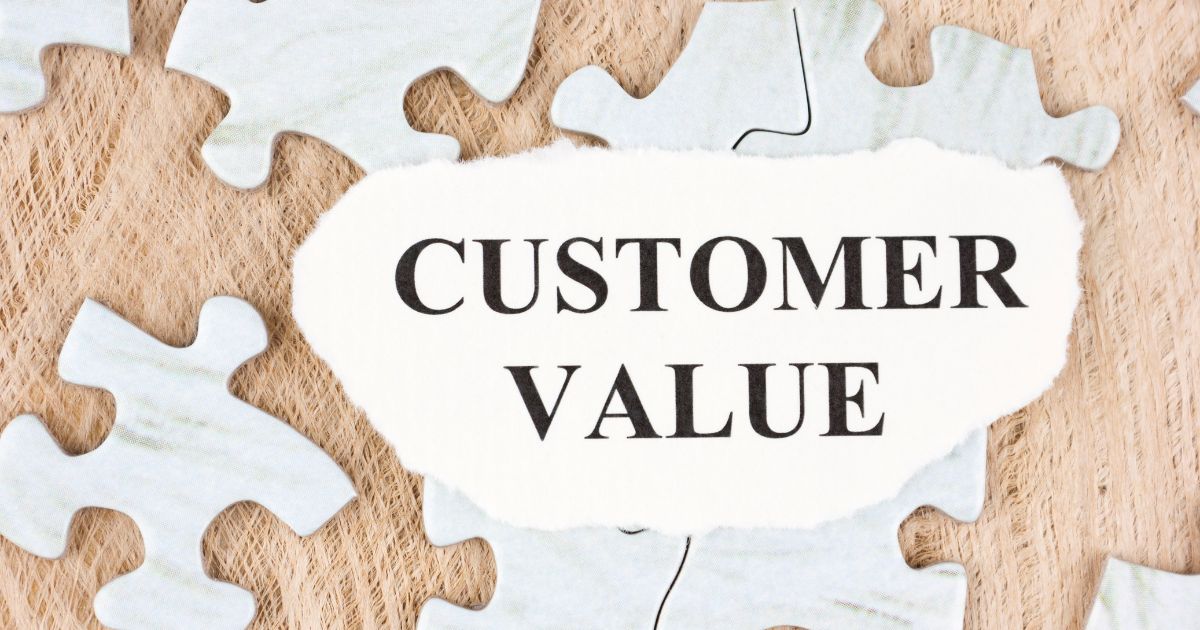
Creating a seamless and intuitive customer value journey is critical to ensuring prospects move smoothly through your sales funnel. By meticulously designing each step of the journey, you can enhance user experience, increase engagement, and ultimately drive higher conversions. This section explores how to streamline your customer value journey using the Customer Value Journey Map, with a focus on designing intuitive funnel steps and showcasing examples of optimized user flows.
Designing Intuitive and Seamless Funnel Steps
To streamline the customer value journey, it's essential to understand the 8 stages of the Customer Value Journey as outlined by DigitalMarketer. Each stage represents a crucial step in transforming a prospect into a loyal customer and brand advocate:
Awareness: At this stage, potential customers become aware of your brand. Use targeted content like blog posts, social media, and ads to capture their attention.
Engagement: Engage your audience with valuable content that resonates with their interests and needs. Webinars, videos, and interactive content work well here.
Subscribe: Encourage prospects to subscribe to your email list or follow your social media channels by offering lead magnets such as eBooks, checklists, or free trials.
Convert: Convert subscribers into leads by offering low-cost, low-risk entry products or services, such as a one-time discount or a free consultation.
Excite: Provide an exceptional experience with your entry product or service to build excitement and anticipation for further engagement.
Ascend: Offer additional products or services that provide more value, gradually increasing the investment your customer makes in your brand.
Advocate: Encourage satisfied customers to leave positive reviews and testimonials, showcasing their success and satisfaction with your brand.
Promote: Turn your loyal customers into brand promoters who actively recommend your products or services to others, amplifying your reach through word-of-mouth and referrals.
By meticulously planning each of these stages, you can create a funnel that feels natural and intuitive to your prospects, guiding them seamlessly from initial awareness to enthusiastic promotion.
Examples of Optimized User Flows and Their Impact
Real-world examples of optimized user flows can provide valuable insights into how to structure your own funnel steps. Let's explore a few examples:
1. Example 1: E-commerce Store
Awareness: The store runs targeted Facebook ads promoting a blog post about the latest fashion trends.
Engagement: Visitors read the blog post and are invited to join a newsletter for exclusive fashion tips.
Subscribe: In exchange for their email address, subscribers receive a 10% discount on their first purchase.
Convert: Subscribers use the discount to make their first purchase, which arrives with a personalized thank-you note.
Excite: Customers receive an email showcasing how to style their new purchase with other items in the store.
Ascend: The store offers a loyalty program with exclusive discounts and early access to new collections.
Advocate: Satisfied customers are invited to share their outfits on social media with a branded hashtag.
Promote: Top customers are featured in the store’s social media campaigns and receive special rewards for referrals.
2. Impact: This user flow resulted in higher customer retention rates, increased average order value, and a robust referral program that drove significant new customer acquisition.
3. Example 2: SaaS Product
Awareness: The company publishes an informative article on LinkedIn about common challenges in the industry, attracting professionals looking for solutions.
Engagement: Readers are invited to attend a free webinar where industry experts discuss advanced strategies to overcome these challenges.
Subscribe: Webinar attendees receive a free trial of the SaaS product.
Convert: During the trial, users receive personalized onboarding emails with tips on how to maximize the product's features.
Excite: Users are impressed with the product's capabilities and receive a limited-time discount to upgrade to a premium plan.
Ascend: The company offers advanced training sessions and additional features in higher-tier plans.
Advocate: Happy customers are asked to provide testimonials and case studies showcasing their success.
Promote: Satisfied users participate in the company’s referral program, earning rewards for bringing in new customers.
4. Impact: This streamlined user flow led to increased trial-to-paid conversion rates, higher customer lifetime value, and a steady stream of referrals from satisfied users.
By studying these examples and applying the principles of the Customer Value Journey Map, you can design intuitive and effective funnel steps that guide your prospects smoothly through each stage, enhancing their overall experience and driving higher conversion rates.
Leverage Cutting-Edge Tools for Maximum Efficiency
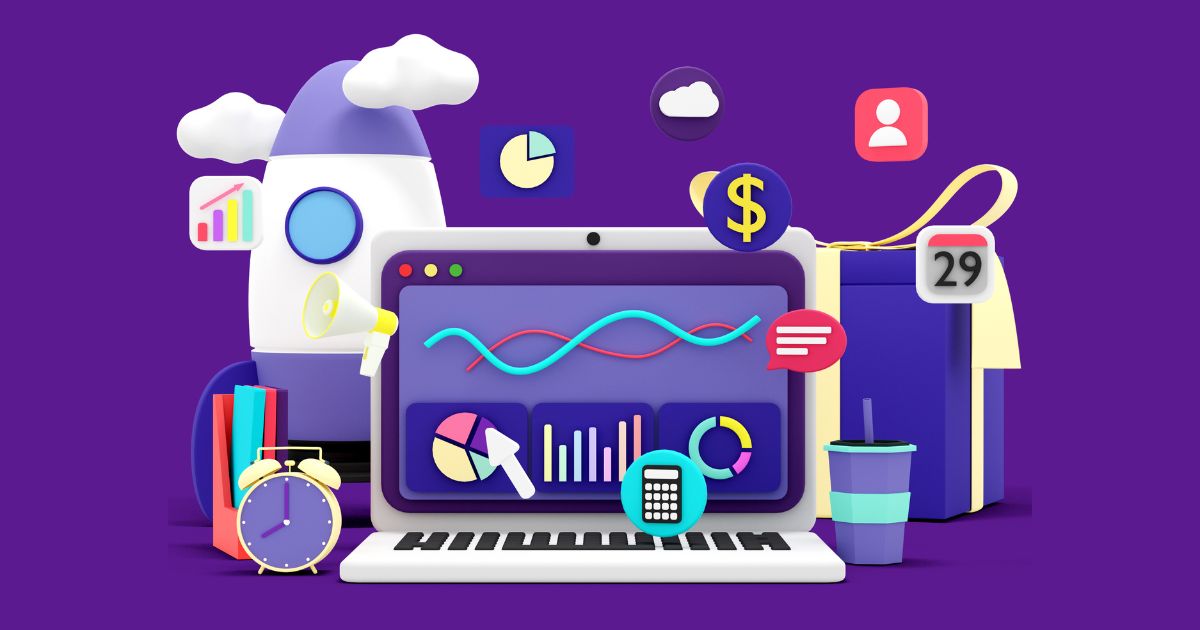
Top Sales Funnel Tools to Elevate Your Strategy
In today’s competitive digital landscape, leveraging the right tools can make all the difference in your sales funnel’s success. The right funnel-building software not only simplifies the process of creating effective sales funnels but also enhances their performance and impact. Let’s dive into the features and benefits of leading funnel-building tools and explore how they can revolutionize your marketing strategy, with a special focus on Innovative Marketing Pro (IMP).
Features and Benefits of Leading Funnel-Building Software
Knowing when to post your content is crucial for reaching your audience when they are most active. Each social media platform has peak times when users are more likely to engage. For instance:
1. Innovative Marketing Pro (IMP)
Feature: Comprehensive Analytics Dashboard
Benefit: IMP’s advanced analytics dashboard provides deep insights into every aspect of your sales funnel. Track user behavior, conversion rates, and ROI with ease, enabling data-driven decisions to optimize your marketing strategy.
Feature: Seamless Integration with Other Marketing Tools
Benefit: IMP integrates effortlessly with popular CRM systems, email marketing platforms, and social media tools. This connectivity ensures a smooth flow of data across your marketing ecosystem, enhancing efficiency and effectiveness.
Feature: AI-Powered Personalization
Benefit: IMP utilizes artificial intelligence to personalize customer interactions at every funnel stage. Tailor content and offers based on individual user behavior and preferences, boosting engagement and conversion rates.
2. ClickFunnels
Feature: Drag-and-Drop Editor
Benefit: Create visually stunning and high-converting funnels without any coding knowledge. The intuitive drag-and-drop editor simplifies the design process, allowing you to focus on crafting compelling content.
Feature: One-Click Upsells and Downsells
Benefit: Maximize your revenue potential with ClickFunnels’ one-click upsell and downsell features. Easily offer additional products or services at checkout, increasing average order value and customer satisfaction.
Feature: Built-In Email and Facebook Marketing Automation
Benefit: Automate your email campaigns and Facebook marketing efforts directly within ClickFunnels. This integrated approach saves time and ensures consistent messaging across channels.
3. Leadpages
Feature: High-Converting Landing Page Templates
Benefit: Choose from a wide range of professionally designed landing page templates optimized for conversion. Leadpages’ templates are tested and proven to drive engagement and lead generation.
Feature: A/B Testing and Analytics
Benefit: Conduct A/B tests to determine which elements of your landing pages perform best. Use the detailed analytics to refine your strategy and continuously improve conversion rates.
Feature: Easy Integration with Email Marketing Services
Benefit: Connect Leadpages with your favorite email marketing service to automate lead nurturing campaigns. This seamless integration helps maintain engagement and move prospects through the funnel efficiently.
4. HubSpot
Feature: All-in-One Marketing Platform
Benefit: HubSpot offers a comprehensive suite of marketing tools, including CRM, email marketing, social media management, and more. This all-in-one platform streamlines your marketing efforts and provides a unified view of your customer interactions.
Feature: Smart Content and Personalization
Benefit: Deliver personalized content experiences based on user behavior and lifecycle stage. HubSpot’s smart content tools ensure relevant and engaging interactions that drive conversions.
Feature: In-Depth Reporting and Analytics
Benefit: Access detailed reports and analytics to measure the performance of your marketing campaigns. Use these insights to identify strengths, address weaknesses, and optimize your overall strategy.
How These Tools Can Revolutionize Your Marketing
Implementing these powerful funnel-building tools can transform your marketing efforts in several key ways:
Enhanced Efficiency: Tools like IMP and ClickFunnels streamline the funnel creation process, allowing you to build high-converting funnels quickly and easily. This efficiency frees up time for you to focus on strategy and creativity.
Data-Driven Decisions: Advanced analytics and reporting features in tools like IMP and HubSpot provide valuable insights into your funnel’s performance. Make informed decisions based on real data, leading to continuous improvement and better results.
Personalized Customer Experiences: AI-powered personalization and smart content capabilities in IMP and HubSpot ensure that each interaction is tailored to the individual user. Personalized experiences drive higher engagement and conversion rates.
Increased Revenue Potential: Features like one-click upsells in ClickFunnels and high-converting landing pages in Leadpages help maximize revenue opportunities. Offer additional products or services seamlessly, increasing the average order value and overall sales.
Seamless Integration: Integration capabilities in tools like IMP and Leadpages ensure that your marketing ecosystem works harmoniously. Connect CRM systems, email marketing platforms, and social media tools to create a cohesive and efficient marketing strategy.
By leveraging these top sales funnel tools, you can elevate your marketing strategy, enhance customer engagement, and drive higher conversion rates. Innovative Marketing Pro, with its advanced features and seamless integration, stands out as a powerful solution for businesses looking to optimize their sales funnels and achieve unprecedented growth.
Automation: The Key to Scalability

In the fast-paced world of digital marketing, scalability is essential for growth. Automation is the secret weapon that allows businesses to scale their operations efficiently without compromising on quality or customer experience. By automating repetitive tasks, businesses can focus on strategic initiatives and foster sustainable growth. This section explores how implementing automation can enhance funnel performance and showcases success stories of automation in action.
Implementing Automation to Enhance Funnel Performance
Automation streamlines various aspects of your sales funnel, from lead generation to nurturing and conversion. Here’s how you can implement automation to supercharge your funnel performance:
1. Lead Capture and Segmentation:
Automated Forms and Pop-ups: Use tools like IMP, ClickFunnels, and Leadpages to create automated forms and pop-ups that capture leads efficiently. These tools can instantly segment leads based on their responses, ensuring they enter the appropriate stage of your funnel.
Dynamic Content Delivery: Automatically tailor content and offers based on lead segmentation. For example, deliver different lead magnets to prospects based on their interests and behavior.
2. Lead Nurturing:
Email Drip Campaigns: Set up automated email sequences that nurture leads over time. Personalize these emails based on user interactions and engagement levels, guiding them smoothly through the funnel.
Behavioral Triggers: Use behavioral triggers to automate follow-ups. For instance, if a lead visits your pricing page multiple times, an automated email offering a discount or a demo can be sent to nudge them towards conversion.
3. Conversion Optimization:
Automated A/B Testing: Implement automated A/B testing for landing pages, emails, and other funnel elements. This allows you to continuously optimize your funnel based on real-time data.
Retargeting Campaigns: Automatically retarget leads who haven’t converted yet with personalized ads on social media and other platforms, keeping your brand top of mind.
4. Customer Relationship Management:
CRM Integration: Integrate your funnel tools with CRM systems like HubSpot and Salesforce to automate lead tracking and follow-up tasks. This ensures no lead falls through the cracks and helps maintain a seamless flow of information across your marketing and sales teams.
Post-Purchase Automation: Use automation to engage customers post-purchase with thank-you emails, satisfaction surveys, and personalized product recommendations, fostering long-term loyalty.
Success Stories: Automation in Action
Let’s explore some real-world success stories that demonstrate the power of automation in enhancing funnel performance:
1. Case Study: E-Commerce Store
Challenge: An e-commerce store struggled with high cart abandonment rates.
Solution: The store implemented an automated email sequence triggered when a customer added items to their cart but didn’t complete the purchase. The sequence included a reminder email, a follow-up with customer reviews, and a final email offering a discount.
Result: The automation led to a 25% reduction in cart abandonment rates and a significant increase in completed purchases.
2. Case Study: SaaS Company
Challenge: A SaaS company needed to improve its trial-to-paid conversion rates.
Solution: The company used automation to create personalized onboarding email sequences for new trial users. These emails provided valuable tips, feature highlights, and case studies, tailored to each user’s activity and engagement.
Result: The personalized onboarding experience increased trial-to-paid conversions by 30%, driving substantial revenue growth.
3. Case Study: Digital Marketing Agency
Challenge: A digital marketing agency wanted to enhance lead nurturing and improve client acquisition.
Solution: The agency implemented an automated lead nurturing workflow that included personalized email sequences, dynamic content delivery, and behavior-triggered follow-ups. They also integrated their CRM with their automation tools to streamline lead management.
Result: The comprehensive automation strategy led to a 40% increase in lead engagement and a 20% rise in new client acquisitions within six months.
By implementing automation, these businesses not only enhanced their funnel performance but also achieved significant growth and efficiency. Automation allows you to scale your operations seamlessly, ensuring that your marketing efforts are always timely, relevant, and personalized.
Drive Conversions with Continuous Testing and Refinement
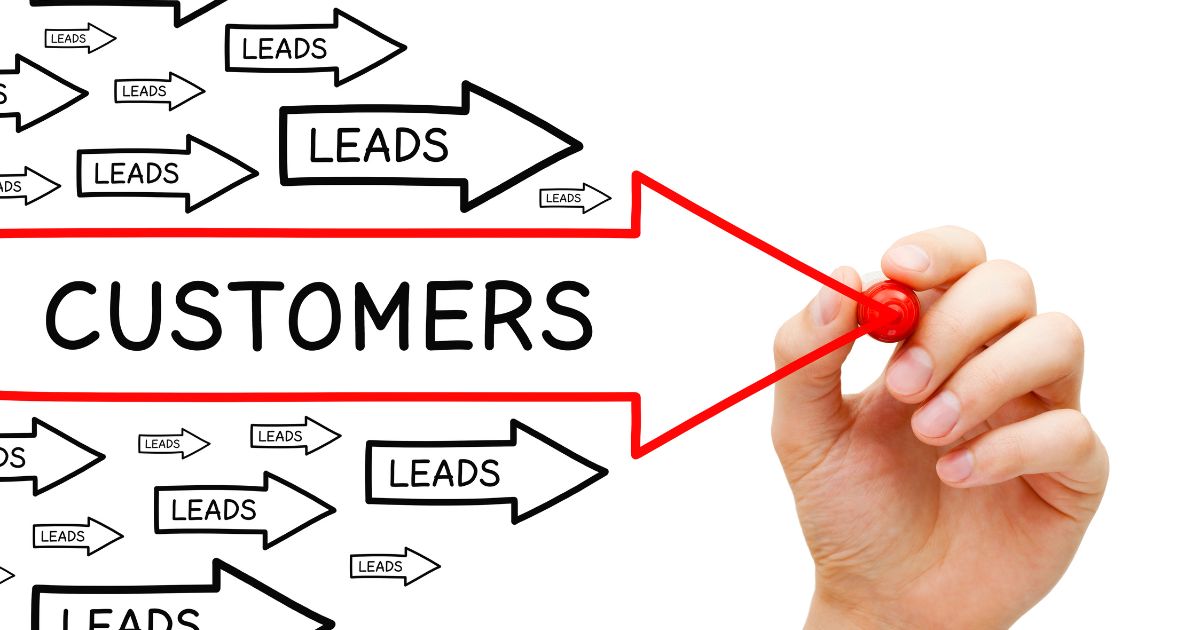
The Power of A/B Testing
A/B testing, also known as split testing, is a powerful tool that allows you to compare two versions of a webpage, email, or other marketing asset to determine which performs better. By testing different elements, you can optimize your sales funnel for higher conversion rates and make data-driven decisions that significantly impact your marketing strategy. This section explores how to set up effective A/B tests and how to interpret the results to enhance your funnel's performance.
How to Set Up Effective A/B Tests
Setting up A/B tests involves several key steps to ensure that the results are reliable and actionable. Here’s how to conduct effective A/B tests:
1. Define Your Hypothesis:
Start with a Clear Objective: Identify what you want to achieve with the test. Are you aiming to increase click-through rates, improve conversions, or reduce bounce rates? Having a clear objective will guide your testing process.
Formulate a Hypothesis: Based on your objective, create a hypothesis that predicts the outcome of the test. For example, “Changing the call-to-action button color from green to red will increase click-through rates.”
2. Identify Variables to Test:
Select a Single Variable: Focus on testing one variable at a time to isolate its impact. This could be the headline, call-to-action button, image, or layout.
Create Two Variations: Develop two versions of the asset, A (the control) and B (the variation), where only the selected variable differs.
3. Set Up the Test:
Use A/B Testing Tools: Utilize tools like Google Optimize, Optimizely, or VWO to set up and manage your tests. These tools allow you to split your traffic evenly between the two versions and track performance metrics.
Define Your Audience: Ensure that your test audience is representative of your overall target audience. Randomly assign visitors to either the control or variation group to avoid bias.
3. Set Up the Test:
Determine Sample Size: Calculate the sample size needed to achieve statistically significant results. Online calculators can help determine the required sample size based on your expected conversion rate and desired confidence level.
Set Test Duration: Run the test for a sufficient period to gather enough data. Avoid ending the test prematurely, as short-term fluctuations can skew the results.
Interpreting Results to Make Data-Driven Decisions
Once the test is complete, interpreting the results accurately is crucial for making informed decisions. Here’s how to analyze your A/B test results:
2. Analyze Key Metrics:
Compare Performance Metrics: Look at the key metrics defined in your objective, such as click-through rates, conversion rates, or engagement levels. Compare the performance of the control and variation.
Check for Statistical Significance: Ensure that the differences observed are statistically significant. A statistically significant result means that the observed effect is likely not due to chance.
2. Draw Insights:
Identify Winning Elements: Determine which version performed better and why. Analyze the winning elements and understand how they contributed to the improved performance.
Consider Secondary Metrics: Besides the primary metric, look at secondary metrics to gather additional insights. For example, if the primary metric is conversion rate, also check the average time on page or bounce rate.
3. Implement and Iterate:
Apply the Winning Variation: Once you’ve identified the winning variation, implement it across your funnel. This could involve updating landing pages, email templates, or other marketing assets.
Plan Further Tests: A/B testing is an ongoing process. Use the insights gained to formulate new hypotheses and conduct further tests. Continuous testing and optimization lead to sustained improvements over time.
Case Study: A/B Testing in Action
Let’s look at a real-world example to illustrate the power of A/B testing:
Case Study: Online Retailer
Objective: Increase the conversion rate of the product page.
Hypothesis: Changing the “Add to Cart” button color from blue to orange will make it more noticeable and increase clicks.
Test Setup: Two versions of the product page were created—one with the blue button (control) and one with the orange button (variation).
Results: After running the test for two weeks, the orange button version showed a 15% higher conversion rate than the blue button version. The result was statistically significant, confirming that the color change positively impacted conversions.
Implementation: The retailer updated the “Add to Cart” button color across all product pages to orange, resulting in a sustained increase in conversion rates.
By systematically setting up and analyzing A/B tests, you can make data-driven decisions that enhance your sales funnel's performance. This iterative process of testing and optimization ensures that your marketing strategies are always evolving and improving, leading to higher engagement and conversion rates.
Fine-Tuning for Perfection

Achieving perfection in your sales funnel is an ongoing process that requires constant monitoring, analysis, and optimization. Fine-tuning your funnel ensures that every element works harmoniously to guide prospects seamlessly from awareness to conversion. This section will cover the key metrics to monitor and optimize, as well as practical tips for continuous improvement.
Key Metrics to Monitor and Optimize
Monitoring the right metrics is essential to understand how well your sales funnel is performing and where improvements are needed. Here are the key metrics you should focus on:
1. Conversion Rate:
What to Monitor: Track the percentage of visitors who take the desired action at each stage of your funnel, such as signing up for a newsletter, downloading a lead magnet, or making a purchase.
Why It Matters: Conversion rates indicate the effectiveness of your funnel in turning visitors into leads and leads into customers. Optimizing these rates can significantly boost your overall performance.
2. Bounce Rate:
What to Monitor: Measure the percentage of visitors who leave your site after viewing only one page.
Why It Matters: A high bounce rate can signal that your landing pages or content are not engaging or relevant. Reducing bounce rates can lead to higher engagement and more conversions.
3. Average Time on Page:
What to Monitor: Track how long visitors spend on your pages.
Why It Matters: Longer time on page usually indicates that your content is valuable and engaging. Optimizing for longer visits can help build trust and encourage conversions.
4. Customer Acquisition Cost (CAC):
What to Monitor: Calculate the total cost of acquiring a new customer, including marketing and sales expenses.
Why It Matters: Lowering your CAC while maintaining or increasing your conversion rates can improve your ROI and overall profitability.
5. Lifetime Value (LTV):
What to Monitor: Measure the total revenue generated by a customer over their lifetime relationship with your business.
Why It Matters: Increasing LTV means more revenue per customer, which can justify higher acquisition costs and support sustainable growth.
6. Drop-Off Rates:
What to Monitor: Identify the stages in your funnel where prospects are dropping off.
Why It Matters: Understanding where drop-offs occur allows you to pinpoint and address specific issues, ensuring a smoother customer journey.
Practical Tips for Continuous Improvement
Continuous improvement is vital to maintaining an effective and high-performing sales funnel. Here are some practical tips to keep your funnel in top shape:
1. Conduct Regular Audits:
Action: Periodically review your entire funnel to identify areas for improvement. Check for outdated content, broken links, and any inconsistencies in messaging.
Benefit: Regular audits help ensure that your funnel remains relevant, effective, and aligned with your business goals.
2. Implement Feedback Loops:
Action: Collect feedback from customers at various stages of the funnel through surveys, reviews, and direct communication.
Benefit: Customer feedback provides valuable insights into their experiences and pain points, guiding you in making targeted improvements.
3. Optimize for Mobile:
Action: Ensure that your funnel is fully optimized for mobile users, including responsive design, fast loading times, and easy navigation.
Benefit: With a significant portion of web traffic coming from mobile devices, optimizing for mobile can enhance user experience and boost conversions.
4. Leverage Heatmaps and Session Recordings:
Action: Use tools like Hotjar and Crazy Egg to analyze user behavior through heatmaps and session recordings.
Benefit: These insights help you understand how visitors interact with your pages, allowing you to make data-driven design and content adjustments.
5. Test and Iterate:
Action: Continuously run A/B tests on various elements of your funnel, from headlines and CTAs to page layouts and email sequences.
Benefit: Testing and iterating help you discover what works best for your audience, leading to incremental improvements and higher conversion rates.
6. Personalize User Experiences:
Action: Utilize personalization tools to tailor content and offers based on user behavior, preferences, and demographics.
Benefit: Personalized experiences can significantly increase engagement and conversion rates by making your marketing efforts more relevant and appealing.
7. Monitor Competitors:
Action: Keep an eye on your competitors’ funnels and marketing strategies. Analyze what works for them and consider how similar tactics could be applied or adapted to your funnel.
Benefit: Staying informed about industry trends and competitor strategies ensures that you remain competitive and innovative in your approach.
By focusing on these key metrics and implementing practical tips for continuous improvement, you can fine-tune your sales funnel to perfection. This ongoing process of monitoring, analyzing, and optimizing will help you achieve higher conversion rates, better customer engagement, and sustainable growth for your business.
Achieve Unprecedented Growth with Optimized Sales Funnels
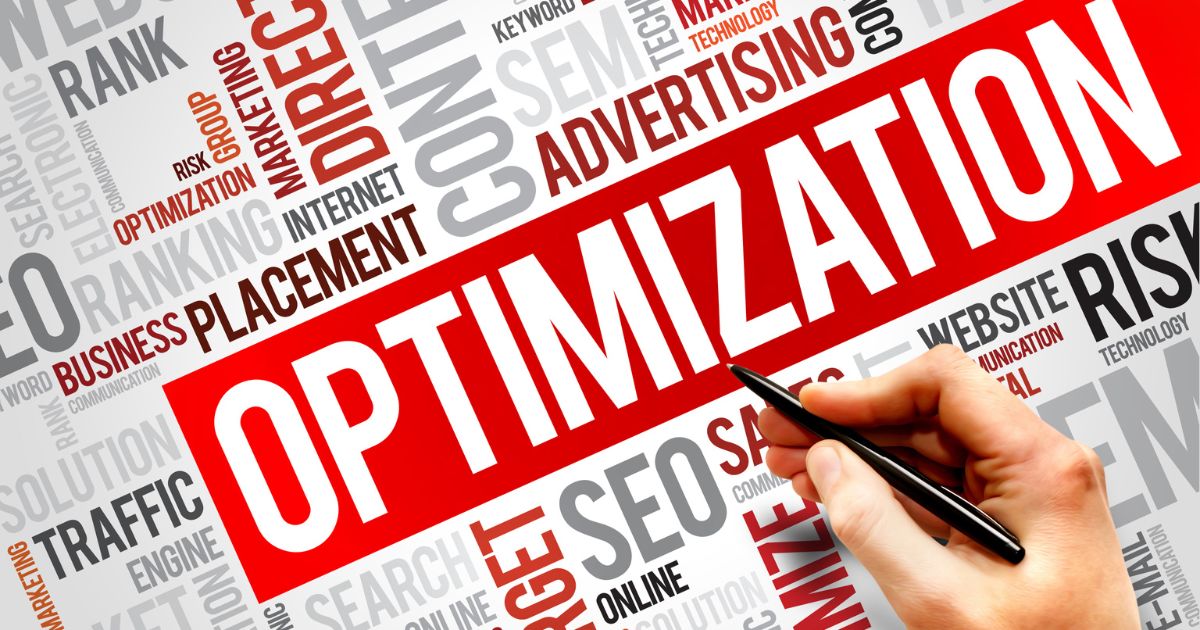
Optimizing your sales funnel is a transformative process that can drive significant growth and efficiency in your business. By fine-tuning each stage of the funnel, you can enhance user experience, increase conversion rates, and maximize revenue. Let’s recap the essential strategies for funnel optimization, discuss why this should be your top priority, and encourage you to start implementing these tactics today.
Recap of Essential Strategies for Funnel Optimization
1. Understanding and Segmenting Your Audience:
Develop detailed buyer personas to understand your audience’s needs, preferences, and pain points.
Segment your audience to deliver personalized and relevant content at each stage of the funnel.
2. Crafting Compelling Content:
Create high-quality, engaging content that addresses the specific needs of your audience.
Use lead magnets like eBooks, checklists, and webinars to capture leads and nurture them through the funnel.
3. Leveraging Automation:
Implement automation tools to streamline lead capture, nurturing, and conversion processes.
Use behavioral triggers and personalized email sequences to keep prospects engaged and moving through the funnel.
4. Utilizing A/B Testing:
Continuously run A/B tests on various elements of your funnel to determine what works best.
Use the insights gained from testing to make data-driven decisions and optimize your funnel.
5. Monitoring Key Metrics:
Track essential metrics like conversion rates, bounce rates, and customer acquisition costs to gauge funnel performance.
Regularly review and analyze these metrics to identify areas for improvement and make necessary adjustments.
6. Optimizing User Experience:
Ensure your funnel is mobile-friendly, fast-loading, and easy to navigate.
Use heatmaps and session recordings to understand user behavior and optimize page layouts and content accordingly.
Why Optimizing Your Sales Funnel Should Be Your Top Priority
In today’s highly competitive digital landscape, the effectiveness of your sales funnel can make or break your business. Here’s why optimizing your sales funnel should be at the top of your priority list:
Increased Conversion Rates: An optimized sales funnel guides prospects smoothly through each stage, reducing friction and increasing the likelihood of conversion.
Higher Customer Satisfaction: By delivering personalized and relevant content, you can enhance the overall customer experience, leading to higher satisfaction and loyalty.
Improved ROI: Optimization ensures that your marketing efforts are efficient and effective, resulting in a higher return on investment.
Scalability: An automated and well-optimized funnel can handle increased traffic and leads without compromising on quality, allowing you to scale your business seamlessly.
Competitive Advantage: Staying ahead of the competition requires continuous improvement and innovation. An optimized sales funnel gives you the edge needed to outperform your competitors.
Encouragement to Start Implementing These Tactics Today
Now that you have a comprehensive understanding of the strategies and benefits of optimizing your sales funnel, it’s time to take action. Here’s how you can get started:
Conduct a Funnel Audit: Assess your current sales funnel to identify strengths, weaknesses, and opportunities for improvement.
Set Clear Objectives: Define what you want to achieve with your optimization efforts, whether it’s increasing conversion rates, reducing drop-offs, or enhancing user experience.
Implement Changes Incrementally: Start with one or two key areas for improvement and gradually implement changes. Monitor the impact and iterate as needed.
Leverage Tools and Resources: Utilize the best funnel-building and optimization tools available to streamline the process and achieve better results.
Commit to Continuous Improvement: Optimization is an ongoing process. Regularly review your funnel’s performance, gather feedback, and make data-driven adjustments to keep improving.
By prioritizing the optimization of your sales funnel, you can unlock unprecedented growth and take your business to new heights. The journey to perfection may be continuous, but the rewards of increased efficiency, higher conversions, and sustained growth are well worth the effort.
Start implementing these tactics today and witness the transformative power of an optimized sales funnel. Your business’s future success depends on it!
Take the Next Step: Transform Your Sales Funnel Now

Optimizing your sales funnel is a game-changer for your business, but the journey doesn't end with understanding the strategies. It’s time to put this knowledge into action and transform your sales funnel for unparalleled growth and efficiency. Here’s how you can take the next step and leverage all the resources available to you.
Download Our Comprehensive Guide to Sales Funnel Optimization
Our comprehensive guide is packed with actionable insights, detailed strategies, and practical tips that will help you fine-tune every aspect of your sales funnel. Whether you’re just starting or looking to optimize an existing funnel, this guide covers everything you need to know.
What’s Inside: Step-by-step instructions on building, optimizing, and scaling your sales funnel. Learn how to identify bottlenecks, implement automation, and create content that converts.
Benefits: Gain a deeper understanding of your audience, improve conversion rates, and enhance customer satisfaction. With this guide, you'll have a roadmap to creating a high-performing sales funnel that drives results.
How to Get It: Simply click the link below to download your copy and start transforming your sales funnel today.
Explore Additional Resources to Enhance Your Marketing Skills
Beyond our comprehensive guide, we offer a wealth of additional resources designed to help you hone your marketing skills and stay ahead of industry trends.
Blog Articles: Dive into our extensive library of blog posts, covering a wide range of topics from advanced funnel strategies to the latest marketing trends. Each article is crafted to provide you with actionable insights and practical advice.
Webinars and Workshops: Join our live webinars and workshops where industry experts share their knowledge on various aspects of digital marketing. These sessions are interactive, allowing you to ask questions and gain personalized insights.
Case Studies: Learn from real-world examples of businesses that have successfully implemented and optimized their sales funnels. These case studies provide valuable lessons and inspiration for your own efforts.
Sign Up for a Free 30-Day Trial of Innovative Marketing Pro
Ready to take your funnel optimization to the next level? Sign up for a free 30-day trial of Innovative Marketing Pro (IMP) and experience the power of advanced analytics, seamless integrations, and AI-driven personalization.
Features of IMP:
Comprehensive analytics dashboard to track and optimize funnel performance.
Seamless integration with CRM systems, email marketing platforms, and social media tools.
AI-powered personalization to tailor customer interactions and boost engagement.
How to Get Started: Click the link below to sign up for your free trial and start leveraging the full capabilities of Innovative Marketing Pro.
Join Our Community: Subscribe for More Expert Tips and Insights
Stay connected and continue your learning journey by joining our vibrant community of marketers and business owners. By subscribing, you'll gain access to exclusive content, expert tips, and the latest insights delivered straight to your inbox.
Weekly Newsletter: Receive our weekly newsletter packed with the latest articles, resources, and updates on upcoming events. Stay informed about new strategies and tools that can elevate your marketing efforts.
Exclusive Content: Subscribers get access to exclusive content that’s not available on our website. This includes in-depth guides, special reports, and advanced tutorials.
Community Engagement: Join discussions, share your experiences, and learn from fellow marketers in our community forums and social media groups. Networking with like-minded professionals can provide new perspectives and valuable connections.
Call to Action: Transform Your Funnel Today
Don’t let another day go by with an underperforming sales funnel. Take the next step towards achieving unprecedented growth and efficiency. Download our comprehensive guide, explore our resources, and join our community to stay ahead in the ever-evolving world of digital marketing.
Your journey to a high-performing sales funnel starts now. Let’s transform your funnel and drive your business towards success.
Together, we can optimize your sales funnel and achieve the growth and success your business deserves.
Join The
Innovative Marketing Pro
15 Days FREE Trial!
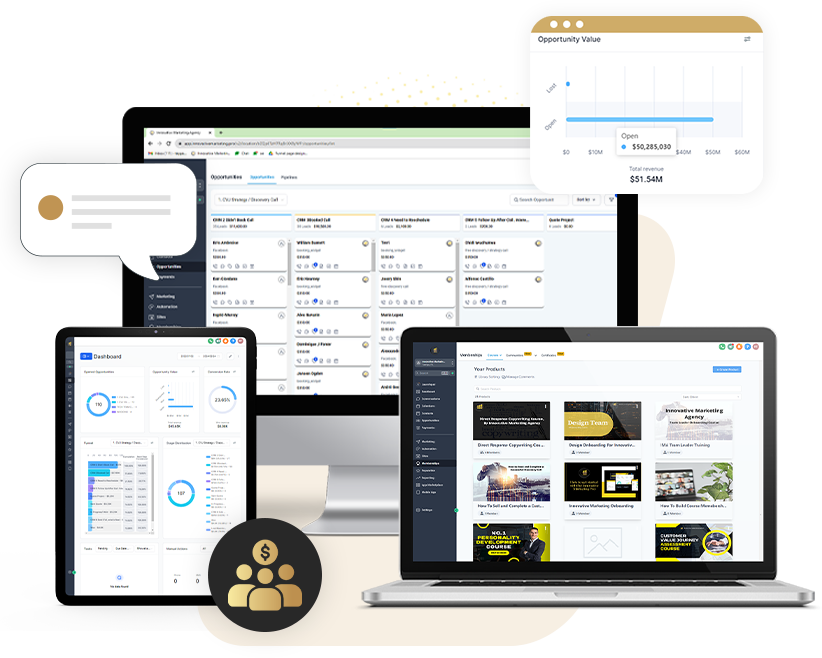
You Pay $0 Today
You Won't be charged until Free Trial Ends
No Commitment, Cancel Anytime
As a reminder we will email you 7 days before Trial Ends
Recent Posts
AI-Powered Lead Generation: Key Strategies for Business Success in 2024
Why Superior Customer Relationship Management Will Determine Winners and Losers
Choosing the Right Email Marketing Software for Your Business
The Ultimate Guide to Social Media Management Tools
Maximizing Conversions: The Best Funnel Builders Reviewed
Building Strong Online Communities: Best Platforms and Practices"
Boost Your Lead Quality: 10 AI-Powered Lead Generation Strategies
Innovative CRM Tools You Need to Know About in 2024
Join The
Innovative Marketing Pro
15 Days FREE Trial!

You Pay $0 Today
You Won't be charged until Free Trial Ends
No Commitment, Cancel Anytime
As a reminder we will email you 7 days before Trial Ends
Recent Posts
AI-Powered Lead Generation: Key Strategies for Business Success in 2024
Why Superior Customer Relationship Management Will Determine Winners and Losers
Choosing the Right Email Marketing Software for Your Business
The Ultimate Guide to Social Media Management Tools
Maximizing Conversions: The Best Funnel Builders Reviewed
Building Strong Online Communities: Best Platforms and Practices"
Boost Your Lead Quality: 10 AI-Powered Lead Generation Strategies
Innovative CRM Tools You Need to Know About in 2024
Download Our Comprehensive Guide
Advanced Funnel Optimization: Techniques for Maximum Conversion
This invaluable resource provides step-by-step instructions, actionable strategies, and expert insights to help you enhance each stage of your sales funnel. Whether you're an accountant, financial advisor, SaaS provider, B2B service, or coach and course creator, this guide will empower you to drive more conversions and grow your business.
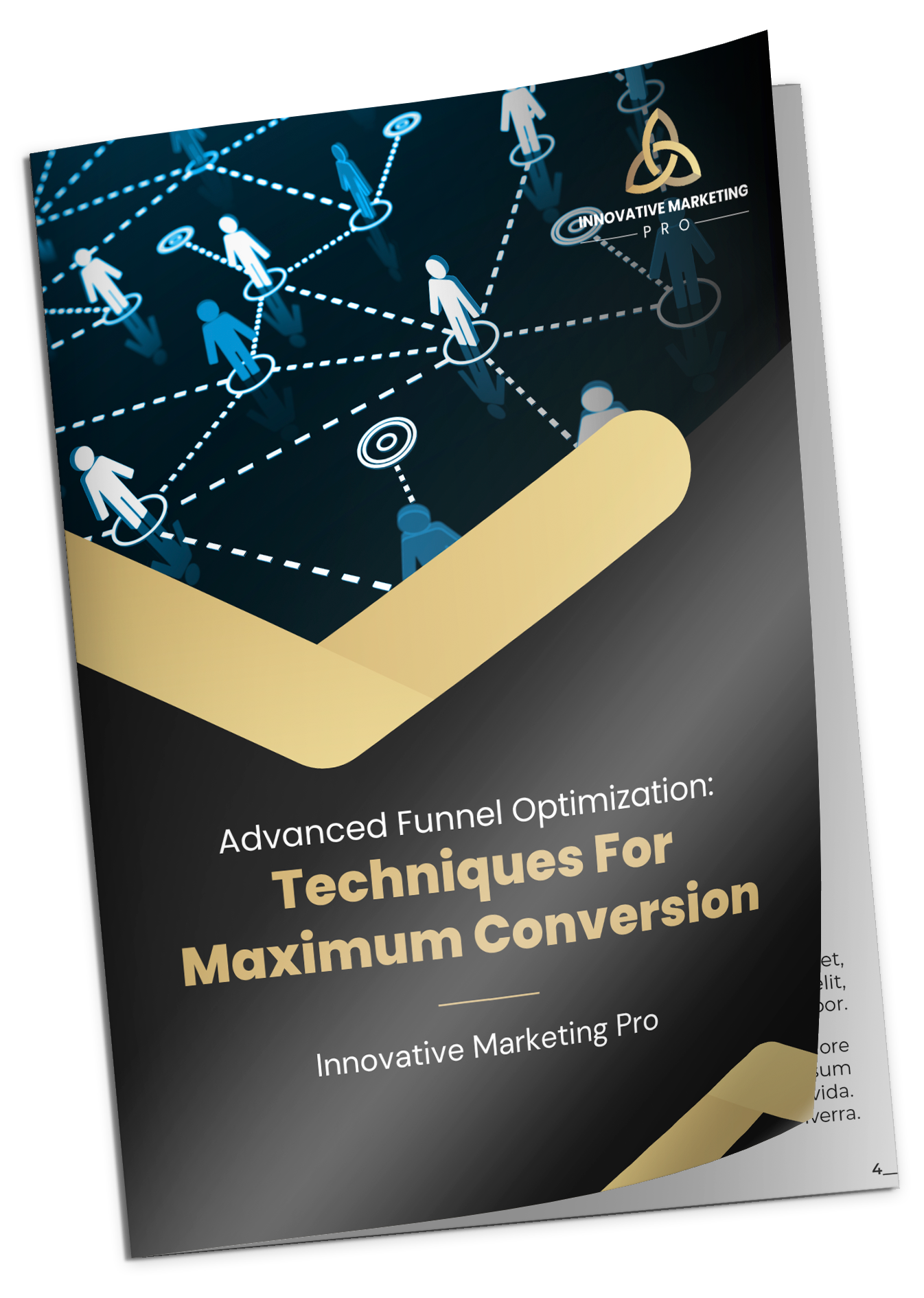

IM Agency Services
Marketing Research
Paid Advertising
Direct Response Copywriting
Funnels and Automations
Marketing Automation
Business Development
IM Pro Features
Lead Generation Automation
Sales Funnels
Customer Relationship Management
Courses Builder
Affiliate Builder
Invoicing
Team Scheduling
Email Automations
Pipelines and workflow
And Way More....
Address & Phone


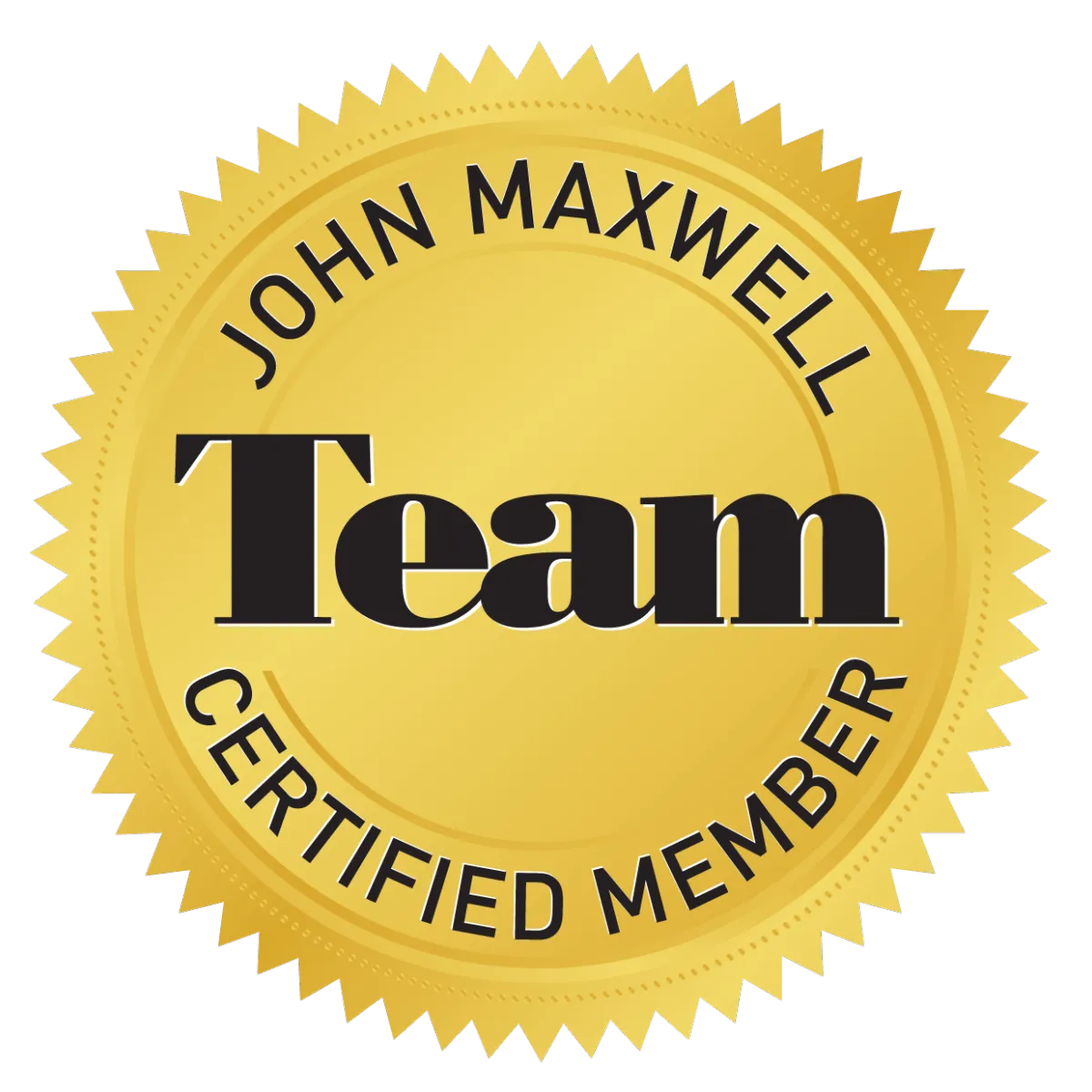

Innovative Marketing Agency
We Design, Build, & Optimize Campaigns
Copyright © 2025 Innovative Marketing Agency LLC

